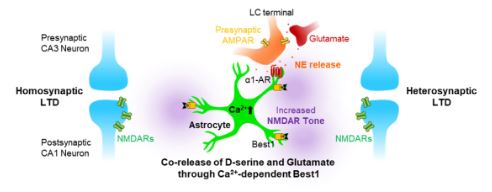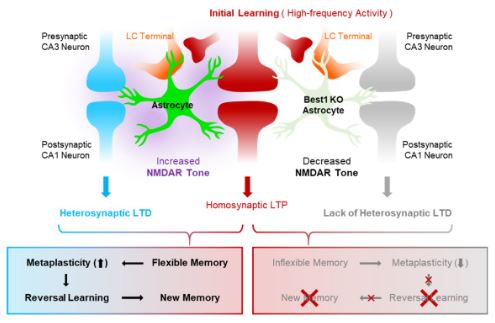주메뉴
- About IBS 연구원소개
-
Research Centers
연구단소개
- Research Outcomes
- Mathematics
- Physics
- Center for Theoretical Physics of the Universe(Particle Theory and Cosmology Group)
- Center for Theoretical Physics of the Universe(Cosmology, Gravity and Astroparticle Physics Group)
- Center for Exotic Nuclear Studies
- Center for Artificial Low Dimensional Electronic Systems
- Center for Underground Physics
- Center for Axion and Precision Physics Research
- Center for Theoretical Physics of Complex Systems
- Center for Quantum Nanoscience
- Center for Van der Waals Quantum Solids
- Chemistry
- Life Sciences
- Earth Science
- Interdisciplinary
- Center for Neuroscience Imaging Research(Neuro Technology Group)
- Center for Neuroscience Imaging Research(Cognitive and Computational Neuroscience Group)
- Center for Algorithmic and Robotized Synthesis
- Center for Genome Engineering
- Center for Nanomedicine
- Center for Biomolecular and Cellular Structure
- Center for 2D Quantum Heterostructures
- Center for Quantum Conversion Research
- Institutes
- Korea Virus Research Institute
- News Center 뉴스 센터
- Career 인재초빙
- Living in Korea IBS School-UST
- IBS School 윤리경영


주메뉴
- About IBS
-
Research Centers
- Research Outcomes
- Mathematics
- Physics
- Center for Theoretical Physics of the Universe(Particle Theory and Cosmology Group)
- Center for Theoretical Physics of the Universe(Cosmology, Gravity and Astroparticle Physics Group)
- Center for Exotic Nuclear Studies
- Center for Artificial Low Dimensional Electronic Systems
- Center for Underground Physics
- Center for Axion and Precision Physics Research
- Center for Theoretical Physics of Complex Systems
- Center for Quantum Nanoscience
- Center for Van der Waals Quantum Solids
- Chemistry
- Life Sciences
- Earth Science
- Interdisciplinary
- Center for Neuroscience Imaging Research(Neuro Technology Group)
- Center for Neuroscience Imaging Research(Cognitive and Computational Neuroscience Group)
- Center for Algorithmic and Robotized Synthesis
- Center for Genome Engineering
- Center for Nanomedicine
- Center for Biomolecular and Cellular Structure
- Center for 2D Quantum Heterostructures
- Center for Quantum Conversion Research
- Institutes
- Korea Virus Research Institute
- News Center
- Career
- Living in Korea
- IBS School
News Center
Star cells in the brain render memory flexible- Hippocampal astrocytes co-release D-serine and glutamate “The measure of intelligence is the ability to change” - Albert Einstein As we live in a dynamically changing environment, it is important for our brain to not only learn new things but also to modify existing memories. This is commonly referred to as "cognitive flexibility". Without this ability, we would not be able to adapt to the altered environment and be vulnerable to making wrong choices from relying only on past memories. Led by Director C. Justin LEE, the researchers at the Center for Cognition and Sociality within the Institute for Basic Science (IBS) in Daejeon, South Korea reported that astrocytes, which are star-shaped cells in the brain, regulate cognitive flexibility. Specifically, they found that the astrocytes’ ability to simultaneously regulate and integrate synaptic plasticity of nearby synapses is important for facilitating cognitive flexibility. It is thought that lower cognitive flexibility in brain disorders such as autism, schizophrenia, and early stages of Alzheimer's disease is caused by the reduced function of N-methyl-D-aspartate receptors (NMDARs). While NMDARs are important receptors for synaptic plasticity and are activated by a number of agonists and co-agonists, the source of one of the co-agonists, D-serine, has been controversial. Using astrocyte-specific gene regulation, the researchers showed that astrocytes can actually synthesize D-serine and release it through the calcium-activated channel called Best1. Combined with the previous knowledge that astrocytes can release glutamate through Best1, the co-release of D-serine and glutamate indicates that astrocytes are ideal regulators of NMDAR activity and synaptic plasticity. In particular, the researchers showed that heterosynaptic long-term depression (LTD), a phenomenon in which inactive synapses weaken when nearby synapses become active, is mediated by astrocytes and is critical for cognitive flexibility. “Since each astrocyte is in contact with over 100,000 synapses, astrocytes can control numerous synapses and integrate synaptic plasticity simultaneously,” said KOH Wuhyun, the first author of this study. In the report, they studied the Best1 knockout (Best1 KO) mouse model that lacks heterosynaptic LTD due to reduced NMDAR tone. In the Morris Water Maze experiment, which involves mice trying to find a hidden platform, Best1 KO mice performed similarly to the wild-type mice in the initial learning session. However, when the platform was relocated to the opposite side, Best1 KO mice exhibited problems in memory modification. Interestingly, when the NMDAR tone was improved in Best1 KO mice by D-serine injection during the initial learning period, their memory modification problem was restored in the subsequent experiment. This discovery shows that memory flexibility is determined from the time of initial learning, which is different from the previously proposed theory that synaptic plasticity only occurs when memory modification is needed. Additionally, the researchers discovered that norepinephrine and its receptor α1-AR can activate astrocytes and cause co-release of D-serine and glutamate. This implies that the flexibility of memory can be determined by the degree of concentration and arousal during the learning period. Director C. Justin LEE stated, “Previous studies have mostly focused on changes in specific synapses to stimuli. The discovery of this phenomenon where changes in one synapse can induce changes in nearby synapses during learning shows that finding out what happens to the other synapses is important for understanding the mechanism of learning and memory formation.” He added, "It is hoped that this study will provide valuable insights on how to relieve or treat symptoms of autism, schizophrenia, and early dementia, which are known to reduce cognitive flexibility."
Notes for editors - References - Media Contact - About the Institute for Basic Science (IBS) |
|||
|
|
| Next | |
|---|---|
| before |
- Content Manager
- Public Relations Team : Yim Ji Yeob 042-878-8173
- Last Update 2023-11-28 14:20













